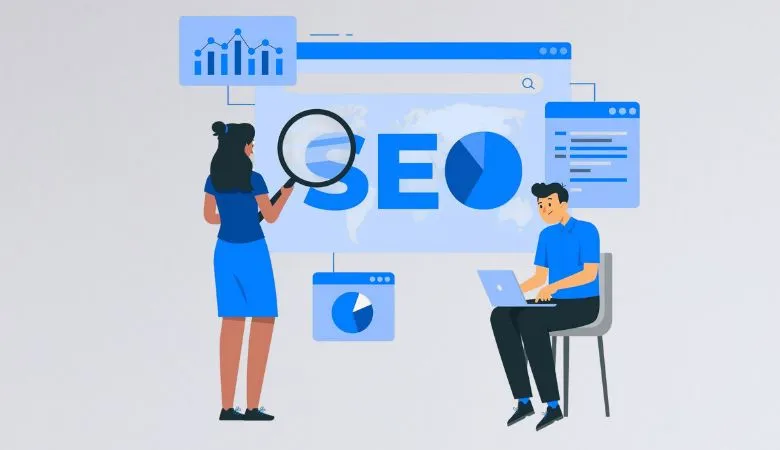How to Create Website Using WordPress (CMS)

Making and creating the WordPress website yourself and for free is easy if you know exactly how to do it and, for this, we will explain it to you in 10 easy steps.
Who thinks of complicating existence when we want to be practical in everything we do. Anything that makes life easy excites us, so let’s welcome the platform that will allow you to create and host a website quickly and easily through its content management system (CMS).
If you are one of those who appreciate the time and value good results, like us, but at the same time you do not want to face the price of creating a WordPress website, follow me, and in no time you will be ready to create your page website in WordPress.
However, the intention is to get you to build a website and make impressions with it professionally, successfully promoting your business to digital marketing.
WordPress has a robust CMS, a solid plugin architecture (plugins) and an attractive template system (themes) in which you can create and customize any content of your future website. That’s why it’s a great tool that you can take advantage of!
How to Make a Website in WordPress? In 10 easy steps!
WordPress has conquered the minds of entrepreneurs, currently becoming the most used content manager to create all kinds of websites. More than 18 years of experience catalogue it as the favourite CMS of millions of users worldwide.
Learn below how to make a page or blog in WordPress successfully?
1. Register your Web Domain Name
Surely you have already taken the time to choose the name that best represents you, that domain name that will identify your company or product. But if you haven’t defined it yet, don’t worry; we are here to help you; let’s build trust and pay special attention to this first step.
Try to study the name you will use for your domain; if you think big, ask yourself: what does it look like and how does it sound in other languages?
An important detail that you have to know is that there are tools that try to make things easier for you — less complex, I mean — and that will undoubtedly guide you in creating web domain name ideas with the help of AI.
And now you are ready to start your journey in the digital world! Also, check that your web domain is available for .com, .org, .net or .io; and then buy it through a domain registrar like GoDaddy or the one of your choice.
Buy Hosting Plan
Remember that the first option to make your website in WordPress was to choose WordPress.com hosting. Still, we recommend hiring another external provider if you are interested in having total control over the behaviour of your website.
Depending on your business objectives, choose from one of the three main external web hosting services offered today:
Types of Hostings
Shared Hosting: Server resources are divided among the other web pages of other clients, where you may face performance issues if all the web pages grow.
VPS Hosting: Here, the resources are also shared, but you will get some control over them. Can feel the improvements in security and performance can feel the improvements in security and performance.
Managed Hosting: This type of hosting offers an exclusive service since you will have your physical web server. Here you can see the notable increase in the performance and security of your website, but also the monthly cost is much higher than the other two options.
—Ah, another important detail, or the icing on the cake. — You should make sure that your hosting provider allows you to install WordPress from their panel or wizard.
2. Install WordPress on your New Web Host
Installing WordPress does not require juggling; you can install it in two ways: from the hosting panel of the server itself with a single click or completely manually.
3. One-Click WordPress Installation
Try to choose a hosting provider that offers you the installation of WordPress with a single click through the cpanel that your hosting provider offers you.
4. Manual WordPress Installation
If you choose a provider that does not offer you the option to install WordPress in one click, you must first download the application from WordPress.org on your computer and then re-upload it to your hosting provider via FTP.
This last option is tedious, but the same results are obtained.
5. Log in to your New WordPress Web System
The decisions with a little more complexity have already been made; from now on, you will have everything on a silver platter to take advantage of the wonders that the popular CMS has for your page or blog.
Enter WordPress with the conviction that it will be very easy to navigate its intuitive interface. There are two ways to log in quickly:
From the web hosting control panel through a direct link.
From the URL through the domain name.
For example, at mysite.com/wp-login.php, once we access the home screen of the WordPress administration space, we type the previously configured user name and password.
6. Choose a Theme in your new WordPress
In the variety is the taste and also this enters through the eyes.
The moment you have been waiting for has arrived! Get ready to play by choosing the theme or template (theme) among hundreds of attractive and modern designs to impact your users. You’ll have fun with the multitude of formatting styles, colours, fonts, and a variety of other eye-catching visuals.
Don’t settle for the default theme that WordPress offers you; go further and dare to combine options so that the result is more suggestive and professional for your visitors. Sharpen your pencil more.
Choosing a theme on WordPress.org is not complicated; go to the administration panel, click on the Appearance menu and then on Themes. On that screen, browse through the available themes and choose to install the one to your satisfaction.
Subsequently, the customization process begins, the most complex for making your WordPress website yourself. In these cases, it can be very interesting to have the timely help of WordPress designers.
7. Create Web Pages and Content
At this point, it is appropriate to create pages and posts, better known as publications, to add content to your creation.
The CMS platform gives you the option to create posts and pages; the former is generally used to create blogs or portfolios, automatically updating their content as featured; On the other hand, static pages are favoured by businesses since the added content stays in the same place. Example: “About us” and “Contact us”.
Decide what you want to create in the Posts: Page or Post menu and click “Add New”.
You have just customized the details of your new website
Making a web page in WordPress does not stop at selecting the theme; customization goes beyond the process of designing, developing and programming a web page.
You can give body to your electronic page considering these aspects:
8. Install Plugins for Additional Web Features
Sensational, we keep moving forward and putting the work environment to the max to add features!
A very interesting feature of the most popular CMS is its plugin system that allows you to expand its capabilities, such as designing the online store.
These plugins are software add-ons that increase the platform’s possibilities to improve aspects of SEO in WordPress, marketing, social networks, custom galleries, spam protection, or web design.
It’s time to increase features to ignite the spark on your website!
And if you need any functionality on your website that is not being covered by any plugin, you will surely need the timely help of a WordPress programmer.
9. Optimize the Web to make your WordPress Fast
It is a huge mistake to allow users to abandon what you have created with a passion due to speed problems. Attracting them is not easy, so driving them away will not be the goal.
Improving the user experience on your digital page is also part of an efficient design. No one wants to stay on a slow and heavy website even if its content promises, especially today, where time is short.
But a slow web page has a remedy, so you can improve its performance by enabling browser caching, for example. That is, by temporarily storing data from your site in your visitors’ browsers, allowing the data to be uploaded to your PC instead of the content sent from the webserver. This speeds up the charging speed substantially.
Install and activate a caching plugin on your web server and make your online creation run faster than a rabbit.
10. Keep your WordPress System up to Date
One of the keys for your website to survive the ups and downs of the digital world is precisely keeping it up to date. Therefore, the updates of the themes and complements are essential for your portal to work at “full speed”; if you don’t, you will expose it to errors and computer attacks.
Checking for updates is simple; once you are logged into WordPress, you must go to the Update Options menu and enter the tabs that will be updated (plugins, themes, etc.)
You can also enter the General menu and configure an automatic update for all the elements or do it individually, as we pointed out in the previous paragraph.
Keeping your work tool updated is essential, and don’t hesitate to contact a web programmer if you need help in this regard.
The time has come to make your website in WordPress. Can we help you?
As you will have verified, the process to make a web page in WordPress does not require a colossal effort, and you have to be attentive to the details.
After reviewing the process for creating a WordPress website, the first thing we must include is purchasing the domain and hosting. Then, we move on to installing and configuring WordPress, installing themes, plugins, and content.
We hope that this guide has been very useful, but if you have any questions, do not hesitate to contact us as the web design company that we are.
If you need help, do not hesitate to ask for a quote for your website and guide yourself towards the path leading to intelligent web design. Finally, remember that success is achieved by turning each step into a goal and a step. Please do not keep this information; share it!


![Old and Present SEO Practices: Guide for the Latest SEO [2025]](https://www.scrolltrendy.com/wp-content/uploads/2025/01/Latest-SEO.webp)



![Digital Marketing Trends in 2024 [AI & More Advancements]](https://www.scrolltrendy.com/wp-content/uploads/2024/07/Digital-Marketing.webp)